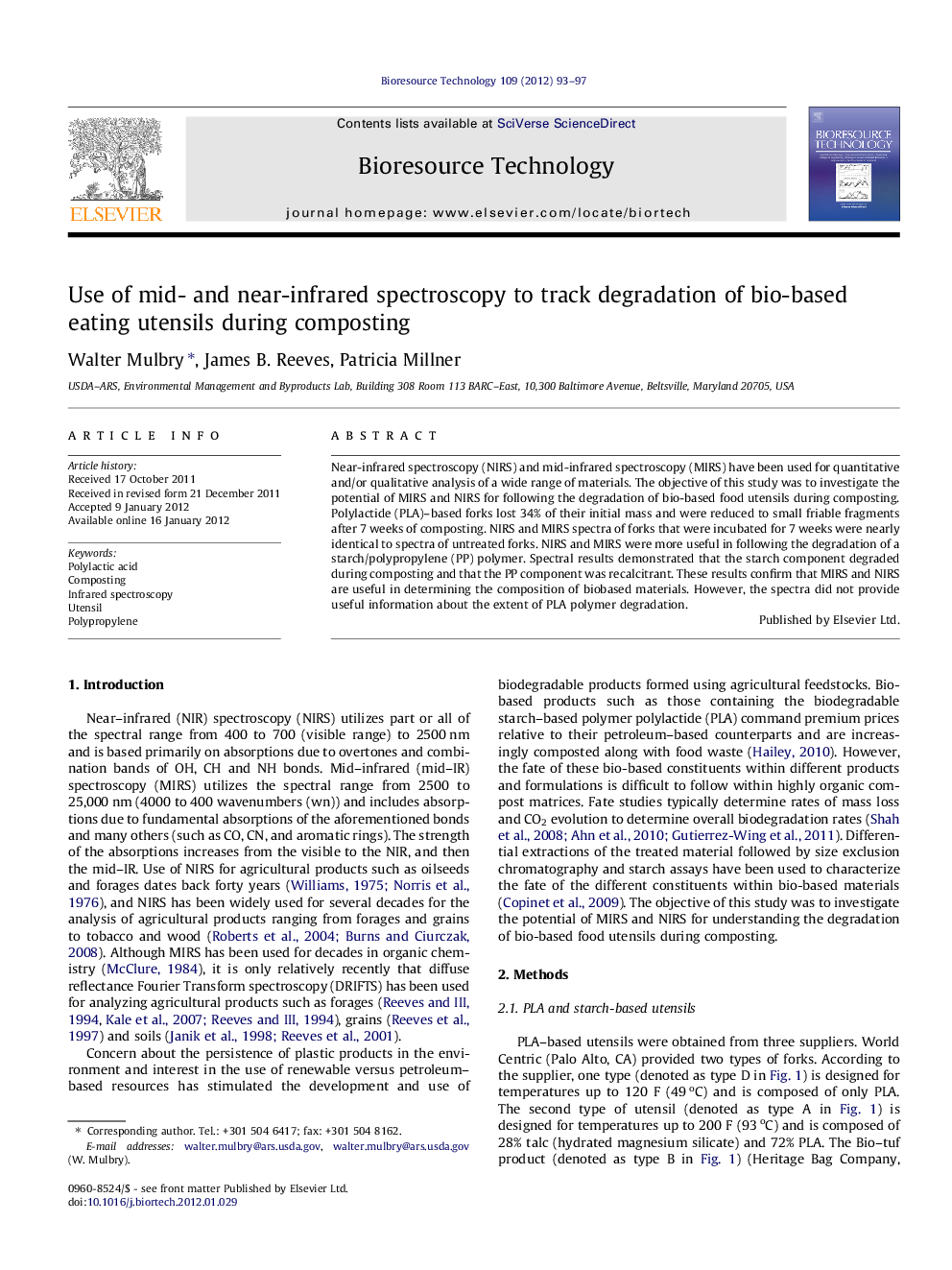| کد مقاله | کد نشریه | سال انتشار | مقاله انگلیسی | نسخه تمام متن |
|---|---|---|---|---|
| 681618 | 1460034 | 2012 | 5 صفحه PDF | دانلود رایگان |

Near-infrared spectroscopy (NIRS) and mid-infrared spectroscopy (MIRS) have been used for quantitative and/or qualitative analysis of a wide range of materials. The objective of this study was to investigate the potential of MIRS and NIRS for following the degradation of bio-based food utensils during composting. Polylactide (PLA)–based forks lost 34% of their initial mass and were reduced to small friable fragments after 7 weeks of composting. NIRS and MIRS spectra of forks that were incubated for 7 weeks were nearly identical to spectra of untreated forks. NIRS and MIRS were more useful in following the degradation of a starch/polypropylene (PP) polymer. Spectral results demonstrated that the starch component degraded during composting and that the PP component was recalcitrant. These results confirm that MIRS and NIRS are useful in determining the composition of biobased materials. However, the spectra did not provide useful information about the extent of PLA polymer degradation.
► Infrared spectroscopy to track degradation of bio-based utensils during composting.
► Infrared spectra of composted PLA forks were identical to spectra of untreated forks.
► Infrared spectra of composted polypropylene/starch forks showed starch degradation.
► Infrared spectra are useful in determining composition of biobased utensils.
► Infrared spectra do not provide useful information about PLA polymer degradation.
Journal: Bioresource Technology - Volume 109, April 2012, Pages 93–97